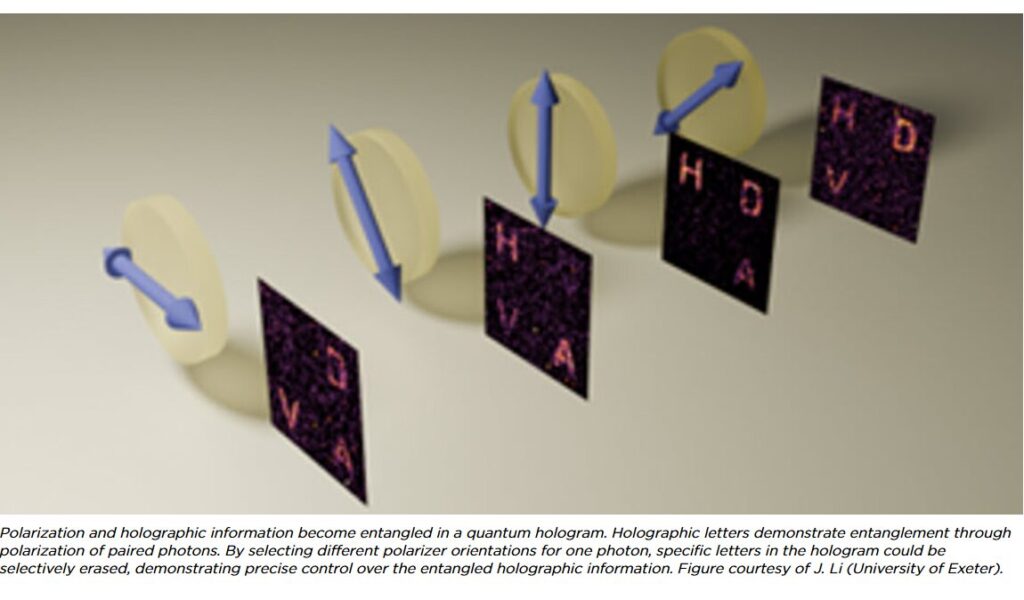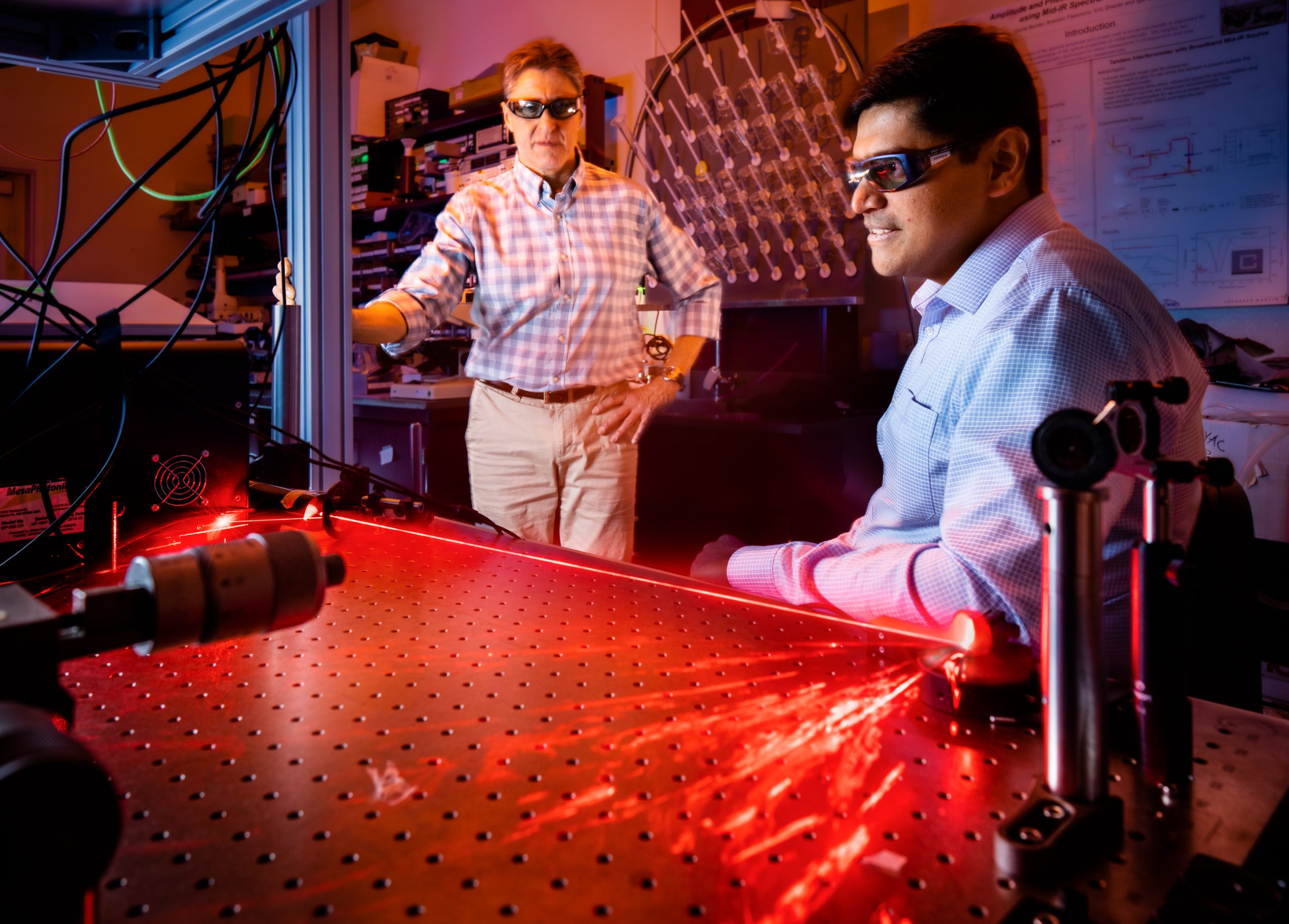
Quantum holograms using polarized light and metasurfaces enable precise control over entangled holographic information, advancing practical applications in quantum communication and anticounterfeiting technologies
Quantum entanglement is a fundamental phenomenon in nature and one of the most intriguing aspects of quantum mechanics. It describes a correlation between two particles, such that measuring the properties of one instantly reveals those of the other, no matter how far apart they are. This unique property has been harnessed in applications such as quantum computing and quantum communication.
A common method for generating entanglement is through a nonlinear crystal, which produces photon pairs with entangled polarizations via spontaneous parametric down-conversion (SPDC)...
Read More









Recent Comments